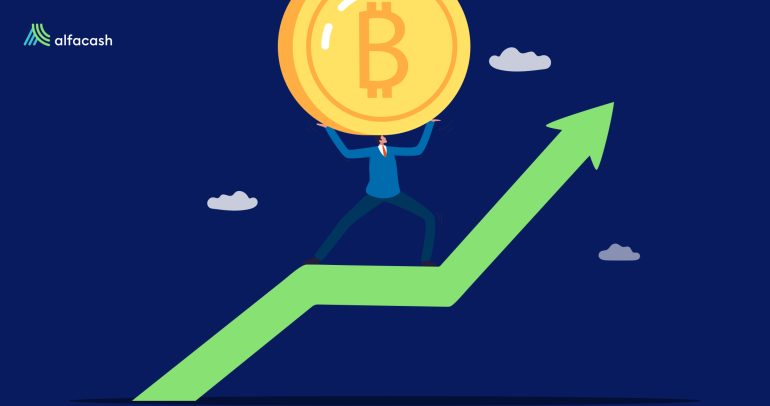Blockchain technology is transforming the financial sector by facilitating the inclusion of innovations that will completely change the traditional system. Among these financial innovations, we find Decentralized Finance (DeFi) and a new concept gaining more and more strength in the crypto ecosystem called Regenerative Finance (ReFi).
Solutions Aiming for Inclusion
There are many new terms about blockchain technology, and you may have heard the acronym DeFi. But have you ever read the crypto abbreviation ReFi?
ReFi
The long-term effects of climate change on financial markets are already a reality impossible to ignore. The economic system as we know it today is closely linked to climate change. The way we exploit resources is unsustainable, and the use of fossil fuels has left its mark on the environment.
Actually, in 2017 it came to light that only 100 companies worldwide were responsible for more than 70% of greenhouse gas emissions since 1988.

Researchers worldwide are looking for solutions to climate change, including in the blockchain industry. For example, Regenerative Finance (ReFi) is a movement that focuses on the ability of crypto and Web3 technology to create a more equitable and sustainable financial system. Therefore, this movement addresses important issues such as climate change, conservation, and biodiversity.
DeFi
Regarding sustainable economies, it’s where ReFi and DeFi face each other. Decentralized finance (DeFi) is a term that refers to all those decentralized services based on blockchain technology that allow traditional financial transactions. Among them is the accumulation of interest, loans, insurance, etc.
The great advantage of DeFi is that it doesn’t require a centralized government, company, or institution so that users can enjoy services that in the traditional economic system involve endless paperwork, waiting, and commissions.
ReFi vs DeFi: which one is more necessary?
Financial inclusion and climate change
One of the common discourses around cryptocurrencies is that mining negatively affects the environment. Individuals and institutions have dedicated extensive articles to justify that cryptocurrency mining harms the environment. However, according to Nasdaq estimates, Bitcoin’s energy consumption is less than that of banking and gold.
Thus, Nasdaq determined that Bitcoin’s energy consumption amounts to 113.89 TWh per year. For their part, gold and banking consume 240.61 TWh per year and 263.72 TWh, respectively.
Furthermore, contrary to what the media has spread, economic practices related to cryptocurrencies can even help save the environment. Thus, the main objective of ReFi in the crypto ecosystem is to show how current financial systems work exploitatively.
However, DeFi, is focused on developing tools whose only authority is the software, the code, and the blockchain. Therefore, in the DeFi category, we include completely new tokens and platforms that base their operation on smart contracts.
And although the DeFi concept is often associated with financial inclusion since it removes traditional barriers to accessing financial products, ReFi also points to equity. Thus, one of the fundamental principles of ReFi is accessibility and equitable distribution of resources through crypto innovations.

But, broadly speaking, the differences between DeFi and ReFi are not so marked since regenerative finance is also based on DeFi principles. ReFi leverages the development of decentralized finance tools and crypto services to include them in regenerative finance projects. For this reason, ReFi projects are usually included in the DeFi category.
Main goals of ReFi and DeFi
One of the main fights that ReFi undertakes is the reduction of the carbon footprint.
Carbon markets are a mechanism to attract money to projects that positively impact the environment, reducing greenhouse gas emissions.
To do this, ReFi offers alternatives that make it easier for companies to acquire carbon credits and eliminate intermediaries. Likewise, ReFi uses the blockchain to validate carbon credits and prevent sellers from offering them twice.
For example, some well-known ReFi organizations are KlimaDAO and Toucan. Also, ReFiDAO features a list of projects using blockchain to drive climate solutions.
DeFi, for its part, does not focus on tasks as altruistic as helping the environment. Therefore, ReFi and DeFi collide in purposes and fundamentals. DeFi presents a host of interesting and valuable products within everyone’s reach, but most of them perpetuate the cycle of resource exploitation that climate change has caused.
Allo stesso modo, several DeFi projects we find in the market have brought useless tokens and fraudulent platforms whose sole purpose is to make huge profits in a short time.
In this context, the realization of ecologically conscious crypto activities (ReFi) points to a much more profound transformation of society. In this sense, regenerative finance challenges are much more complex than DeFi’s and could take much longer to become widespread.
Vuoi scambiare BTC, ETH e altri token? Puoi farlo in modo sicuro su AlfacashE non dimenticare che stiamo parlando di questo e di tante altre cose sui nostri social media.
Telegramma * Facebook * Instagram * Youtube *Twitter








